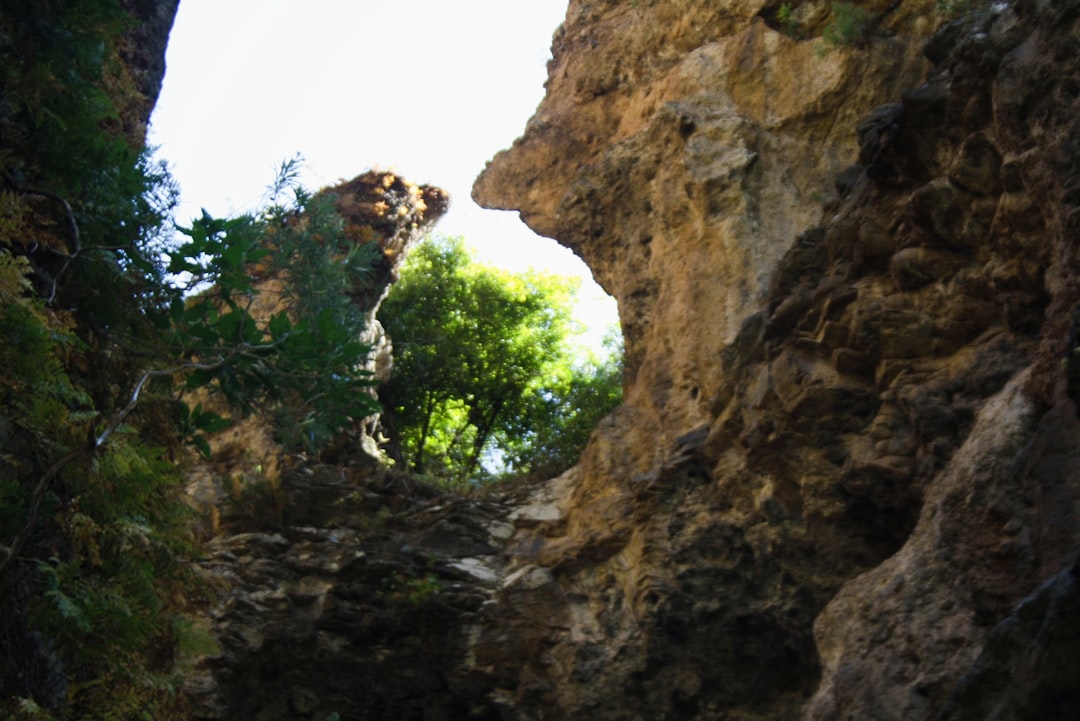The Drake Passage, a body of water situated between the southern tip of South America and Antarctica, serves as a critical conduit for oceanic currents and marine life. Named after the English explorer Sir Francis Drake, who navigated these treacherous waters in the late 16th century, the passage is renowned for its turbulent seas and unpredictable weather patterns. Stretching approximately 800 kilometers (500 miles) wide, it connects the Atlantic and Pacific Oceans, playing a pivotal role in global ocean circulation.
The passage is not only significant for its geographical location but also for its ecological and climatic implications, making it a focal point for scientific research and exploration. The Drake Passage is often characterized by its rough seas and strong winds, which can pose challenges for vessels traversing this region. The confluence of various ocean currents, including the Antarctic Circumpolar Current, creates a unique marine environment that supports a diverse array of wildlife.
From majestic whales to vast colonies of seabirds, the passage is teeming with life, drawing the attention of researchers and nature enthusiasts alike. Understanding the dynamics of this waterway is essential for comprehending broader oceanographic processes and their impact on global climate patterns.
Key Takeaways
- Drake Passage is a narrow body of water between South America’s Cape Horn and the South Shetland Islands of Antarctica.
- The opening of Drake Passage was caused by the movement of tectonic plates, leading to the separation of South America and Antarctica.
- Geological features of Drake Passage include deep ocean basins, underwater mountain ranges, and strong currents due to its narrow width.
- The passage has a significant impact on climate and oceanography, influencing global circulation patterns and the distribution of marine life.
- Fossil evidence in Drake Passage provides insights into ancient climate and oceanographic conditions, helping scientists understand past environmental changes.
Tectonic Plate Movement and the Opening of Drake Passage
The formation of the Drake Passage is intricately linked to the movement of tectonic plates over millions of years. The South American Plate and the Scotia Plate have been in constant motion, gradually shifting apart and allowing the passage to open.
The rifting process that led to the creation of the passage began during the Late Cretaceous period, approximately 70 million years ago, when the separation of South America from Antarctica initiated a series of geological transformations. As these tectonic plates continued to drift, they facilitated the development of a deep oceanic trench that characterizes the Drake Passage today. This trench plays a crucial role in ocean circulation, as it allows cold Antarctic waters to flow northward while warmer waters from the Atlantic and Pacific Oceans move southward.
The interplay between these contrasting water masses contributes to the unique marine environment found in the passage, fostering biodiversity and influencing global climate systems. The ongoing tectonic activity in this region serves as a reminder of the dynamic nature of Earth’s geology and its far-reaching consequences.
Geological Features of Drake Passage

The geological features of the Drake Passage are as diverse as they are fascinating. The seafloor is marked by a series of underwater ridges, valleys, and trenches that reflect the complex tectonic history of the region. One notable feature is the South Scotia Ridge, which runs parallel to the northern edge of the passage and serves as a barrier between different oceanic basins.
This ridge is home to various geological formations, including volcanic islands and seamounts, which provide essential habitats for marine life. In addition to these underwater features, the passage is also characterized by its continental shelf, which extends from the coast of South America into deeper waters. This shelf is rich in nutrients, supporting a vibrant ecosystem that attracts a multitude of fish species and marine mammals.
The geological diversity of the Drake Passage not only contributes to its ecological significance but also offers valuable insights into Earth’s geological history.
Climate and Oceanographic Impact of Drake Passage
| Metrics | Data |
|---|---|
| Sea Surface Temperature | 2-4°C |
| Surface Wind Speed | 10-15 m/s |
| Carbon Dioxide Absorption | 100,000 tons/year |
| Antarctic Circumpolar Current | Strongest current in the world |
The Drake Passage plays a vital role in shaping climate and oceanographic conditions across the globe. As one of the most significant conduits for ocean currents, it facilitates the exchange of heat and nutrients between different ocean basins. The Antarctic Circumpolar Current, which flows uninterrupted around Antarctica, is particularly influential in regulating temperatures and salinity levels in surrounding waters.
This current helps to distribute cold water from the Southern Ocean to other parts of the world, impacting weather patterns and marine ecosystems far beyond its immediate vicinity. Moreover, the passage acts as a barrier that influences atmospheric circulation patterns. The interaction between warm air masses from the north and cold air from Antarctica creates dynamic weather systems that can lead to extreme conditions in both hemispheres.
These climatic effects are not limited to local regions; they extend globally, affecting everything from precipitation patterns to storm intensity. Understanding the climate and oceanographic impact of the Drake Passage is crucial for predicting future changes in global climate systems.
Ancient Climate and Oceanographic Conditions
The ancient climate and oceanographic conditions of the Drake Passage provide valuable insights into Earth’s climatic history. During periods such as the Eocene epoch, approximately 56 to 34 million years ago, the region experienced significantly different environmental conditions than those observed today. Fossil evidence suggests that warmer temperatures prevailed, supporting lush vegetation and diverse marine life.
As tectonic activity continued to reshape the landscape, these ancient ecosystems adapted to changing conditions, leaving behind a rich geological record. The opening of the Drake Passage during the late Eocene marked a significant turning point in global climate dynamics. This event allowed for increased oceanic circulation between the Atlantic and Pacific Oceans, leading to cooler temperatures in many regions.
The establishment of the Antarctic Circumpolar Current further contributed to this cooling trend by isolating Antarctica from warmer equatorial waters. By examining sediment cores from the seafloor, scientists can reconstruct ancient climate conditions and gain insights into how past changes may inform future climate scenarios.
Fossil Evidence in Drake Passage

Fossil evidence found within the sediments of the Drake Passage offers a window into ancient marine ecosystems and climate conditions. Researchers have discovered a variety of fossils, including those of mollusks, foraminifera, and other marine organisms that thrived in different geological epochs. These fossils provide crucial information about past biodiversity and environmental changes in response to shifting climatic conditions.
The presence of certain fossilized species can indicate specific temperature ranges and salinity levels, allowing scientists to reconstruct ancient oceanographic conditions with greater accuracy. For instance, fossils from warmer periods reveal insights into how marine life adapted to changing environments over millions of years. By studying these fossil records, researchers can better understand how current climate change may impact marine ecosystems in the future.
The Role of Antarctica in the Formation of Drake Passage
Antarctica’s role in the formation of the Drake Passage cannot be overstated. As a landmass that has remained largely isolated from other continents for millions of years, Antarctica has significantly influenced global climate patterns and ocean circulation. The continent’s glacial history has shaped not only its own landscape but also that of surrounding regions, including the opening of the Drake Passage itself.
The separation of Antarctica from South America allowed for distinct climatic zones to develop on either side of the passage. This separation facilitated the establishment of cold Antarctic waters that flow northward into warmer oceanic regions, creating a unique thermal gradient that influences weather patterns across hemispheres. Additionally, Antarctica’s vast ice sheets play a crucial role in regulating sea levels and global temperatures, further underscoring its importance in understanding both past and present climate dynamics.
The Influence of the Southern Ocean on Drake Passage
The Southern Ocean’s influence on the Drake Passage is profound and multifaceted. As one of Earth’s major oceanic systems, it plays a critical role in regulating global climate through its interactions with other oceans. The Southern Ocean’s cold waters are essential for driving deep ocean currents that circulate heat around the planet, impacting weather patterns far beyond its boundaries.
In addition to its climatic influence, the Southern Ocean supports a rich diversity of marine life that thrives within the nutrient-rich waters surrounding Antarctica. The upwelling of nutrient-laden waters in this region fosters productive ecosystems that sustain various fish species, seals, penguins, and whales. The health of these ecosystems is closely tied to oceanographic conditions within the Drake Passage, making it essential for researchers to monitor changes in both water temperature and salinity as they relate to broader environmental shifts.
Geological Processes and the Evolution of Drake Passage
The geological processes that have shaped the evolution of the Drake Passage are complex and ongoing. Over millions of years, tectonic activity has led to significant changes in seafloor topography and sediment deposition patterns. Volcanic activity along underwater ridges has contributed to the formation of islands within the passage, while erosion from powerful currents has sculpted its unique geological features.
These geological processes are not static; they continue to evolve as tectonic plates shift and interact with one another. The ongoing movement of these plates influences not only local geology but also global ocean circulation patterns. As scientists study these processes through geological surveys and seismic imaging techniques, they gain valuable insights into how past events have shaped current conditions—and how future changes may unfold.
Human Exploration and Research in Drake Passage
Human exploration of the Drake Passage has a rich history marked by both adventure and scientific inquiry. Early explorers faced treacherous conditions as they navigated these waters in search of new trade routes and territories. Today, modern research vessels equipped with advanced technology allow scientists to study this unique marine environment more comprehensively than ever before.
Research initiatives in the Drake Passage focus on various aspects ranging from marine biology to climate science. Scientists conduct expeditions to collect data on ocean temperature, salinity levels, and biodiversity within this critical ecosystem. These studies contribute significantly to understanding how changes in oceanography may impact global climate systems while also informing conservation efforts aimed at protecting vulnerable marine species.
Future Implications of Drake Passage on Climate and Oceanography
As climate change continues to reshape global environments, understanding the future implications of the Drake Passage on climate and oceanography becomes increasingly vital. The passage serves as a key player in regulating ocean currents that influence weather patterns worldwide; thus, any alterations in its dynamics could have far-reaching consequences. Predictions suggest that warming temperatures may lead to shifts in current patterns within the passage itself—potentially affecting nutrient distribution and marine biodiversity.
Additionally, changes in sea ice extent around Antarctica could further impact global sea levels and weather systems across hemispheres. Ongoing research will be essential for monitoring these changes and developing strategies to mitigate their effects on both local ecosystems and global climates. In conclusion, the Drake Passage stands as a remarkable testament to Earth’s dynamic geological history while serving as an essential component in understanding contemporary climate challenges.
Its unique features—shaped by tectonic movements over millions of years—continue to influence global oceanography today. As scientists delve deeper into this enigmatic waterway’s past and present dynamics, they unlock critical insights that will inform our understanding of future environmental shifts on a planetary scale.
The Drake Passage, a significant body of water connecting the Atlantic and Pacific Oceans, was formed through complex geological processes involving tectonic plate movements and the gradual separation of South America from Antarctica. This separation allowed the Antarctic Circumpolar Current to flow, significantly impacting global ocean circulation and climate. For a deeper understanding of the geological history and the forces that shaped this crucial maritime corridor, you can explore a related article on the topic by visiting this page. This resource provides insights into the dynamic earth processes that contributed to the formation of the Drake Passage.
WATCH NOW! Drake Passage: Earth’s Deadliest Waters Revealed
FAQs
What is Drake Passage?
Drake Passage is the body of water between the southern tip of South America and the northern tip of the Antarctic Peninsula. It connects the Atlantic and Pacific Oceans.
How was Drake Passage formed?
Drake Passage was formed as a result of the separation of South America from Antarctica during the breakup of the supercontinent Gondwana around 30 million years ago. This separation created a gap through which ocean currents could flow, leading to the formation of the passage.
What role does Drake Passage play in ocean circulation?
Drake Passage is a key component of the global ocean circulation system. It is the narrowest constriction between the Atlantic and Pacific Oceans, and the strong westerly winds and currents in the passage play a crucial role in the circulation of water and heat around the world.
What is the significance of Drake Passage in terms of marine life?
Drake Passage is known for its rich and diverse marine life, including a variety of seabirds, seals, and whales. The passage’s unique oceanographic conditions, including upwelling of nutrient-rich waters, support a productive ecosystem.
How does Drake Passage impact weather and climate?
The strong westerly winds and currents in Drake Passage have a significant impact on weather and climate patterns in the Southern Hemisphere. They influence the movement of weather systems and the distribution of heat and moisture, affecting the climate of both South America and Antarctica.
